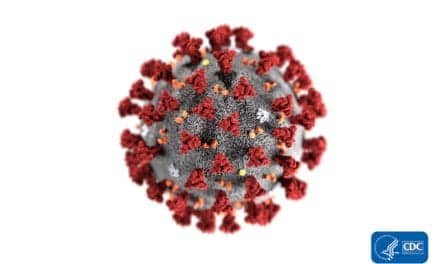Sodium glucose co-transporter-2 (SGLT2) inhibitors do not lead to lower 28-day all-cause mortality compared with usual care or placebo in patients hospitalized with COVID-19, according to research presented at ESC Congress 2023.1
Treatments targeting COVID-19 pathobiology such as disregulated immune responses, endothelial damage, microvascular thrombosis, and inflammation have been shown to improve the key outcomes in this patient group.2,3 SGLT2 inhibitors, which modulate similar pathobiology, provide cardiovascular protection and prevent the progression of kidney disease in patients at risk of these events (eg, with type 2 diabetes, heart failure and kidney disease), and may also lead to organ protection in a setting of acute illness, such as COVID-19.4 However, the role of SGLT2 inhibitors in patients hospitalized with COVID-19 remains uncertain.
The previously completed DARE-19 trial reported that the SGLT2 inhibitor dapagliflozin, while safe, did not benefit patients with COVID-19 who had cardiometabolic risk factors (i.e., those at high risk of progression to severe COVID-19),5-7 but was not adequately powered for certain key outcomes, such as total mortality.8 To address the need for more definitive efficacy data and to inform clinical practice guidelines, the World Health Organization (WHO) Rapid Evidence Appraisal for COVID-19 Therapies (REACT) Working Group conducted a prospective meta-analysis using aggregate data from randomized controlled trials evaluating SGLT2 inhibitors in patients hospitalized with COVID-19.
The meta-analysis evaluated the effects of SGLT2 inhibitors compared with usual care or placebo on 28-day all-cause mortality (the primary outcome) and other efficacy endpoints in patients hospitalized with COVID-19. The primary safety outcome was ketoacidosis by 28 days. Trials were identified through systematic searches of clinicaltrials.gov, EudraCT, and the ISRCTN registry between November 2022 and January 2023. Pre-specified summary outcome data, overall and within subgroups of interest, were provided by the investigators of each trial.
Three eligible trials were included (DARE-19, RECOVERY and ACTIV-4A). Overall, these trials randomized 6,096 participants (3,025 to SGLT2 inhibitors and 3,071 to usual care or placebo), across the US, UK, Brazil, Canada, Mexico, Argentina, India, Spain, Nepal, Indonesia, Vietnam, South Africa and Ghana. The average age of participants ranged between 62 to 73 years across the trials, 2,381 patients (39%) were women and 1,547 (25%) had type 2 diabetes at the time of randomization.
By 28 days after randomization, there were 351 deaths among 3,025 patients randomized to SGLT2 inhibitors and 382 deaths among 3,071 patients randomized to usual care or placebo. The summary odds ratio (OR) was 0.93 (95% confidence interval [CI] 0.79-1.08; p=0.33) for SGLT2 inhibitors, with consistency across trials. This corresponded to an absolute mortality risk of 11.7% for SGLT2 inhibitors compared with an assumed mortality risk of 12.4% for usual care or placebo.
Regarding secondary endpoints, data on in-hospital and 90-day all-cause mortality were only available for two out of three trials (DARE-19 and ACTIV-4A) but the results were similar (OR 0.85, 95% CI 0.60-1.22, p=0.37; and hazard ratio 0.82, 95% CI 0.62-1.10, p=0.18, respectively). The results were also similar for the secondary outcomes of progression to acute kidney injury, requirement for dialysis or death (OR 0.92, 95% CI 0.79-1.06, p=0.26) and progression to invasive mechanical ventilation, extracorporeal membrane oxygenation (ECMO) or death (OR 0.90, 95% CI 0.78-1.04, p=0.16), both assessed at 28 days.
The primary safety outcome of ketoacidosis by 28 days was observed in 7 and 2 patients allocated to SGLT2 inhibitors and usual care or placebo, respectively. Overall, the incidence of reported serious adverse events was balanced between treatment groups.
Presenting author Dr. Mikhail Kosiborod of Saint Luke’s Mid America Heart Institute, Kansas City, US said: “In this prospective meta-analysis of randomized controlled trials evaluating over 6,000 patients hospitalized with COVID-19, we found no convincing evidence that administration of SGLT2 inhibitors, compared with usual care or placebo, reduces 28-day all-cause mortality, or improves other pre-specified efficacy outcomes. These findings do not support the use of SGLT2 inhibitors as standard care in this clinical setting. No new safety signals were observed with the use of SGLT2 inhibitors in this patient population, and their routine discontinuation during acute illness for patients that receive them for other indications such as heart failure, chronic kidney disease, or type 2 diabetes does not appear to be warranted.”
References / Notes
1SGLT2 inhibitors in COVID-19 meta-analysis will be discussed during Hot Line 9 on Monday 28 August at 16:30 to 17:30 CEST in room Amsterdam.
2Gupta A, Madhavan MV, Sehgal K, et al. Extrapulmonary manifestations of COVID-19. Nat Med. 2020;26:1017-1032.
3van de Veerdonk FL, Giamarellos-Bourboulis E, Pickkers P, et al. A guide to immunotherapy for COVID-19. Nat Med. 2022;28:39-50.
4Usman MS, Siddiqi TJ, Anker SD, et al. Effect of SGLT2 inhibitors on cardiovascular outcomes across various patient populations. J Am Coll Cardiol. 2023;81:2377-2387.
5Williamson EJ, Walker AJ, Bhaskaran K, et al. Factors associated with COVID-19-related death using OpenSAFELY. Nature. 2020;584:430-436.
6Sharifi Y, Payab M, Mohammadi-Vajari E, et al. Association between cardiometabolic risk factors and COVID-19 susceptibility, severity and mortality: a review. J Diabetes Metab Disord. 2021;20:1743-1765.
7Chen Q, Wang L, Li C, et al. Chronic cardio-metabolic disease increases the risk of worse outcomes among hospitalized patients with COVID-19: A multicenter, retrospective, and real-world study. J Am Heart Assoc. 2021;10:e018451.
8Kosiborod MN, Esterline R, Furtado RHM, et al. Dapagliflozin in patients with cardiometabolic risk factors hospitalised with COVID-19 (DARE-19): a randomised, double-blind, placebo-controlled, phase 3 trial. Lancet Diabetes Endocrinol. 2021;9:586-594.










